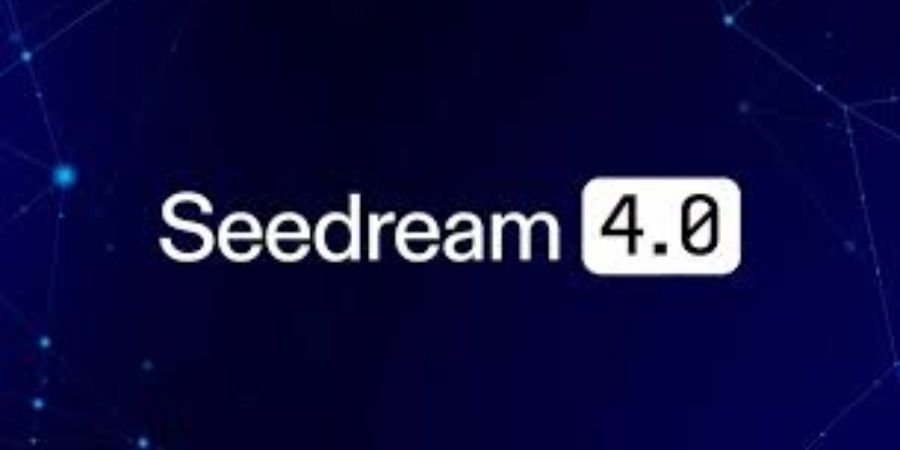Visual creation has always depended on a balance between imagination and technical skill. For decades, producing a single image, whether for advertising, publishing, or social media, required multiple steps, tools, and specialists. Today, that process is changing faster than ever, and one name stands out in the latest wave of innovation: Seedream 4.0 API.
Developed by ByteDance, Seedream 4.0 API is part of a growing ecosystem of multimodal AI models designed to help both individuals and organizations generate, edit, and refine visuals using simple text or image inputs. Its earlier versions already drew attention for their speed and accuracy, but version 4.0 introduces something more fundamental: the ability to merge text-to-image API generation and image editing AI tool functions inside a single API, all while producing high-resolution visuals that rival professional design output.
According to data shared in public benchmarks and research releases, Seedream 4.0 API can generate 2K images in about two seconds and supports outputs up to 4K resolution. These numbers matter because they show that AI-generated visuals are approaching production quality at real-world speeds. It also allows high-resolution visual creation with Seedream 4.0 for enterprise use.
Below is a detailed explanation of the unique features of Seedream 4.0 API, its role in current creative activities, and the reasons behind it being the most talked-about AI image generation model among digital artists.
This guide covers:
- What Seedream 4.0 API is
- Why it matters for creators and developers
- The key features and technical strengths
- How it improves creative workflows
- Real-world examples and use cases
- What to keep in mind before using it
- Why it represents a major step forward in AI creativity
What Seedream 4.0 API Is
Seedream 4.0 API is basically a new, state-of-the-art AI image generation model that can interpret visual instructions and either generate or modify images. One can initiate the process with a text prompt like “a portrait of a traveler in a desert at golden hour” or with an existing image, say a photograph whose background has to be changed or whose lighting needs to be adjustments.
Seedream 4.0 API unlike typical design software that puts generation and editing apart, does both of them in the same operating environment. It employs what scientists have dubbed unified architecture, which means that the same model can interpret prompts, keep visual identity intact and make edits continuously without changing the system. As a result, there is a significantly more liberated creative flow.
In principle, one can think of it as having a design assistant who comprehends even the most basic instructions in English and makes changes without delay but with the utmost professional precision. It is also useful for multi-reference image generation using Seedream 4.0 API across complex projects.
Why Seedream 4.0 Matters for Creators
Modern-day content production has speed, consistency, and flexibility as its major requirements. Marketers, social media managers, and even independent creators have to make visual content on a daily basis, and sometimes, they have to do it very fast.
Photography, design software, revisions, and traditional workflows can slow down the whole process considerably. However, Seedream 4.0 API provides a different solution: quick visual output directed by natural language through a text-to-image API. The time gained can be used for storytelling, strategizing, or engaging with the audience.
In addition to that, there is a psychological aspect to it. By lowering the technical barriers, it invites more creators to the visual production. For instance, a writer can create pictures that are in harmony with the mood of their article without having to grasp the use of complicated design tools. A teacher can make educational visuals without hiring a designer.
The tech does create a situation where the quality is still high while the creativity is accessible to everyone. This shows how to integrate Seedream 4.0 API in production workflows with minimal learning curve.
Key Features of Seedream 4.0 API
Several features make Seedream 4.0 API particularly useful for creative professionals and teams.
- High-resolution output: The API provides the option of creating images in 2K and 4K resolutions, which are extremely clear and perfect for use in both digital marketing and print media campaigns. This allows high-resolution visual creation with Seedream 4.0 very easily.
- Fast generation speed: 2K image rendering in approximately 1.8 seconds is one of the early performance reports. The quick testing and iteration cycles in style or color scheme experiments are among the benefits of this speed.
- Unified generation and editing: The same system allows users to both create and modify images. You can tell the system to “add a sunrise,” “remove the table,” or “make lighting warmer,” and it will alter the image accordingly through its image editing AI tool interface.
- Reference image consistency: Besides one reference image, you can give the model multiple reference images, thereby keeping visual identity through variations. This is a marketing asset for brands that demand unchanging appearance throughout campaigns. It also allows multi-reference image generation using Seedream 4.0 API efficiently.
- Prompt-based editing in natural language: Instead of relying on design layers or doing manual adjustments, creators can just type in simple language their instructions. Thus, it brings the skill barrier down and empowers non-designers to take control of the visual output.
- Multi-image batch generation: The API can produce a lot of different versions simultaneously, thus making it easy for the teams to compare the outputs and select the one that is the most precise for publishing.
How Seedream 4.0 Improves Creative Workflows
Now, imagine a small content team that is working together on a travel campaign. They require pictures of a mountain lodge at different times of the day. Normally, it would mean scheduling a photo shoot or spending hours on manual retouching. With Seedream 4.0 API, they can prompt “a wooden lodge in the Alps at dawn,” “same lodge at sunset,” and “same lodge during snowfall.”
In seconds, they have a complete visual set consistent in structure but varied in mood.
For marketing teams, the gain is speed and flexibility. For individual creators, it is creative control without technical friction.
It also fits well into editorial and storytelling contexts. Writers can generate supporting visuals for their articles, YouTubers can design thumbnail imagery, and educators can illustrate complex topics. In each case, the model translates words into visuals without needing multiple tools or advanced training. This explains how to integrate Seedream 4.0 API in production workflows seamlessly for teams.
The AI image generation model also ensures high-resolution visual creation with Seedream 4.0, making it ideal for commercial campaigns.
Real-World Use Cases
Brand Campaigns: Seasonal campaigns can be created by companies that generating concept images using Seedream 4.0 based on the already existing brand assets. For instance, the beverage company would upload a product reference photo and ask for variations like “on a tropical beach,” “in a winter café,” or “during a city night festival.”
Social Media Content: The API can be utilized by creators who are frequent posters to keep the lighting and tone across their feed consistent Show. If their aesthetic is “minimalist neutral,” they can define that once and use it across several visuals via this text-to-image API.
Editorial and Blogging: Finding stock images that are not generic is usually a problem that writers and publishers have to deal with. Seedream 4.0 API can help them to create visuals that are perfectly in line with the tone and message of each story.
Education and Training: Teachers and content developers have an option to make the visual aids that are correct and support their lessons. For example, “diagram of a water cycle with clear labeling” or “illustration of a medieval marketplace,” which they can edit later using the image editing AI tool.
Product Design Mockups: Today, designers possess the power to fast depict concepts even before they produce tangible models. They sketch “a smartwatch having a bent screen and a brown leather strap” and right away plunge into detailing its aspects.
What to Keep in Mind
- The technology has undergone advancements but it still calls for the careful application by the user. There are a few principles to follow that can help come to better results:
- Be exact in your prompts. Stronger and more vivid images are obtained from descriptive and clear language. On the other hand, vague language could bring about outputs that are not related to the topic.
- Look into rights and policies. Be sure to have a clear understanding of the terms of use, especially in case you plan to use outputs for commercial purposes.
- Preparation for iteration. This is just like any creative process and it needs a lot of time in order to get the final product. So, the model should be treated like a collaborator instead of a one-click solution.
- Be true. It is when AI visuals are there in storytelling or marketing that it makes it the most difficult to hide or put in the background their origin. However, being honest will create trust.
- Don’t scale before you test. It is better to first API it into small projects, learn its strengths and limits, and then do it for larger campaigns.
Why Seedream 4.0 Represents a Major Step Forward
The use of artificial intelligence in visual design is no longer something unheard of. What characterizes this new generation is the way it so perfectly integrates with the real-world creative process. Seedream 4.0 API is an example of such an AI image generation model that can be supportive without obscuring the human imagination that has the credit for it.
The human creators get to do only the parts that require their input – mainly ideas, meaning, and emotions – while the technical details are taken care of in the background through this image editing AI tool. That change, from tool mastery to idea mastery, is what actually makes Seedream 4.0 API so important.
As AI models progress further, the inquiry will shift from “Can machines make art?” to “How can humans and machines collaborate in creating art?” Seedream 4.0 API is a case that gives a possible answer. It provides the creative people with both the freedom to envision more and the capability to carry out those ideas faster. It also opens doors for multi-reference image generation using Seedream 4.0 API in advanced workflows.
Takeaway
What sets apart Seedream 4.0 API is its usability, quickness, and real Creator’s way of working. It clears away the confusion and realizes the idea with astonishing speed. This AI image generation model is already a peek into the future of content creation for the ones that are interested in that future.
The Seedream 4.0 API is a major change in the creative world. It is one tool that combines creative speed, visual consistency and ease of use through its text-to-image API and image editing AI tool features. The creators’ advantage is that they can concentrate on the story, voice and strategy rather than grappling with the technical “how” of images. It is still necessary to direct it properly, iterate, and integrate with your brand or story.
Yet, the arduous task of generation and editing slides into the background. If you are a content producer, a design team leader, or a visual storyteller manager, the API could be a part of your updated toolkit, which would greatly affect your pace and distance. Accept it, investigate it, but do so cautiously and with wise supervision. It truly enables high-resolution visual creation with Seedream 4.0.
Read Also: Top 10 Most Powerful ERP Vendors in 2025 Revealed










